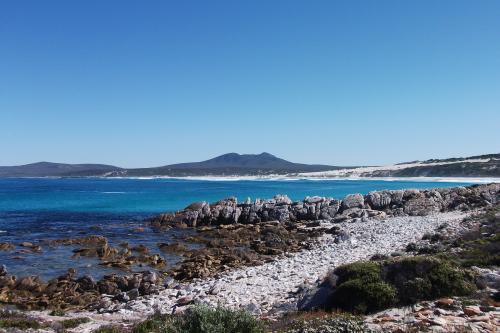About this place
The cliffs at Cave Point hang over the Southern Ocean in all its moods and are a must-see on your visit to the eastern side of the park. Cave Point is an ideal place to spot whales, seabirds and discover a diversity of plants in the rock gardens that cover these exposed headlands.
The jagged and tilted rocks at Cave Point are a distinctive feature of headlands and peaks. From Cave Point there is a clear view of the magnificent East Mount Barren where the jagged outline of tilted rock ridges resemble the spine of a giant sleeping dragon. Below the peak on its seaward slope is a distinctive broad platform that has been carved over time by waves, when the sea level was higher than it is today.
To the west of this view you will discover headlands all along the Fitzgerald coast, with noticeably similar wave-cut platforms created at the same time. The formed path from the parking area to the lookout (600m return) is on a gentle incline with two rest stops and suitable for wheelchairs.
Cave Point is also the eastern trailhead for the Hakea Trail, which follows the coast past West Beach for another 20km to Quoin Head.
Enjoy a short walk along the trail to the scenic bay at West Beach (1.6km return).
Safety information
Plan when to visit. Consider travelling with a personal location beacon (PLB). In the event you need to be rescued it could save your life!
Coast and cliff risks are significant in this park.
Gallery
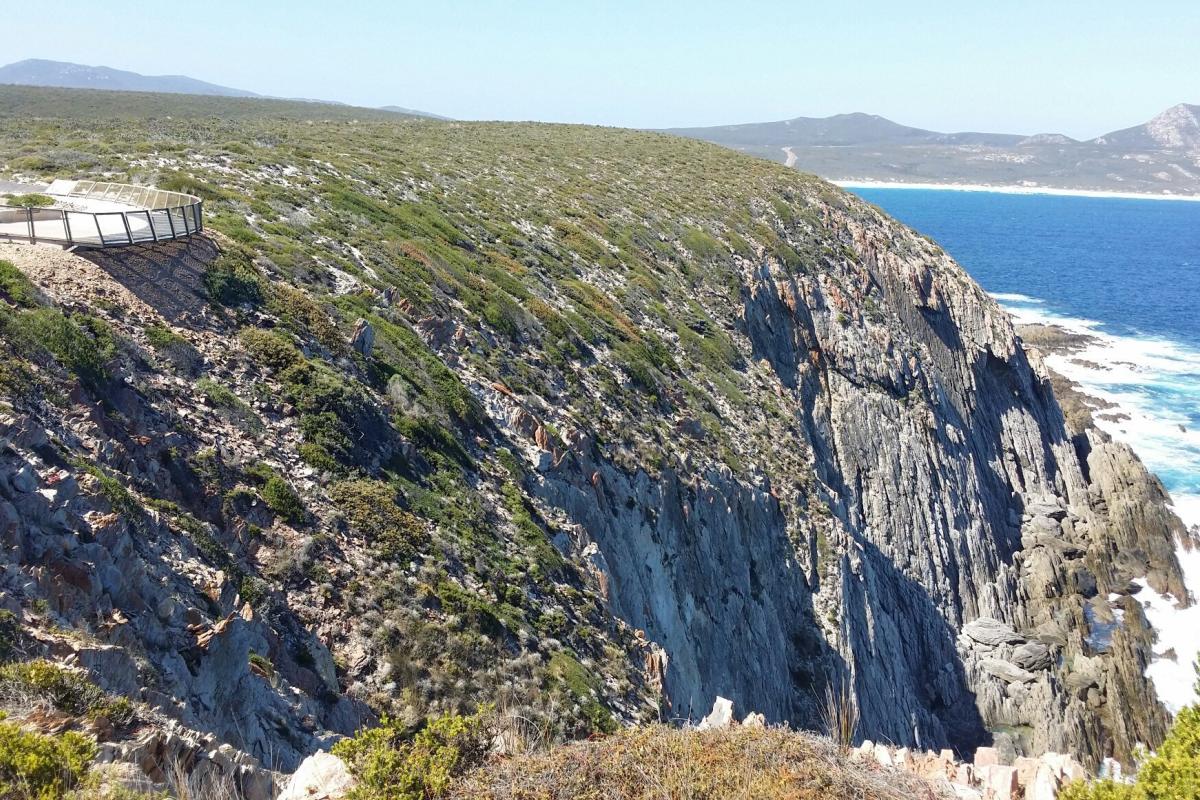
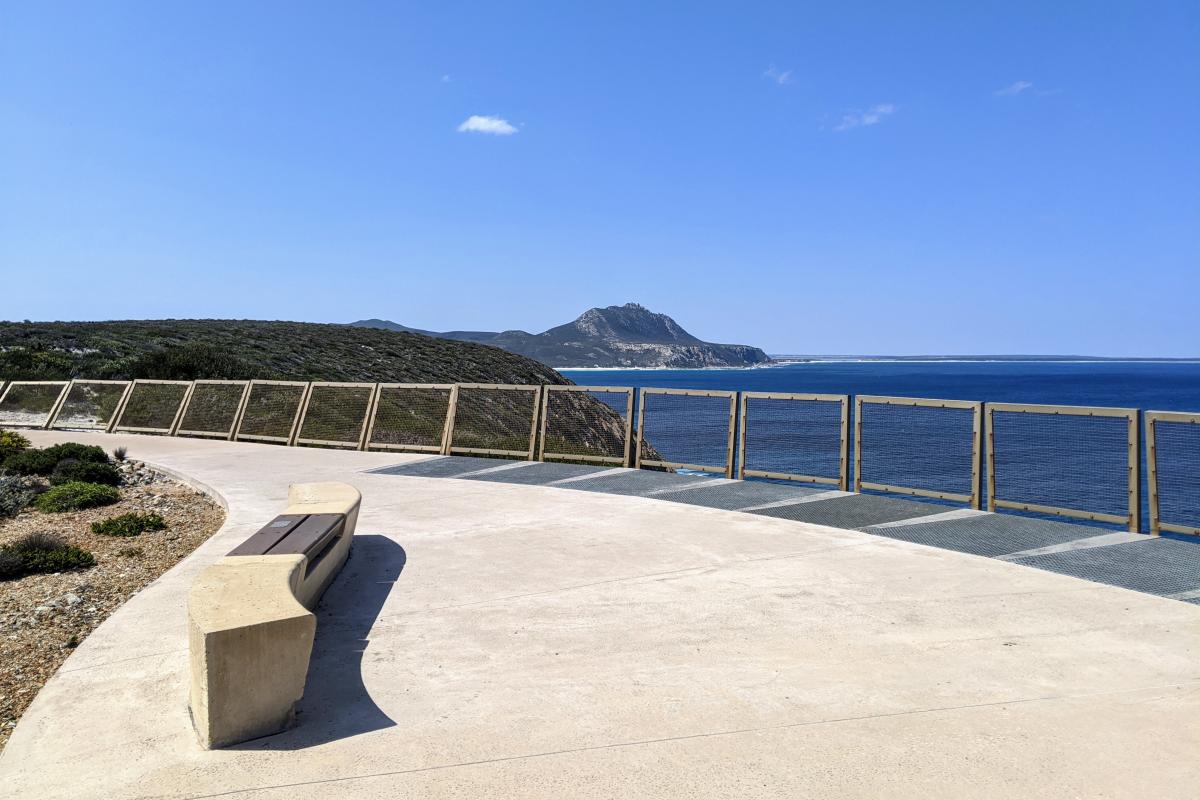
Lookout at Cave Point
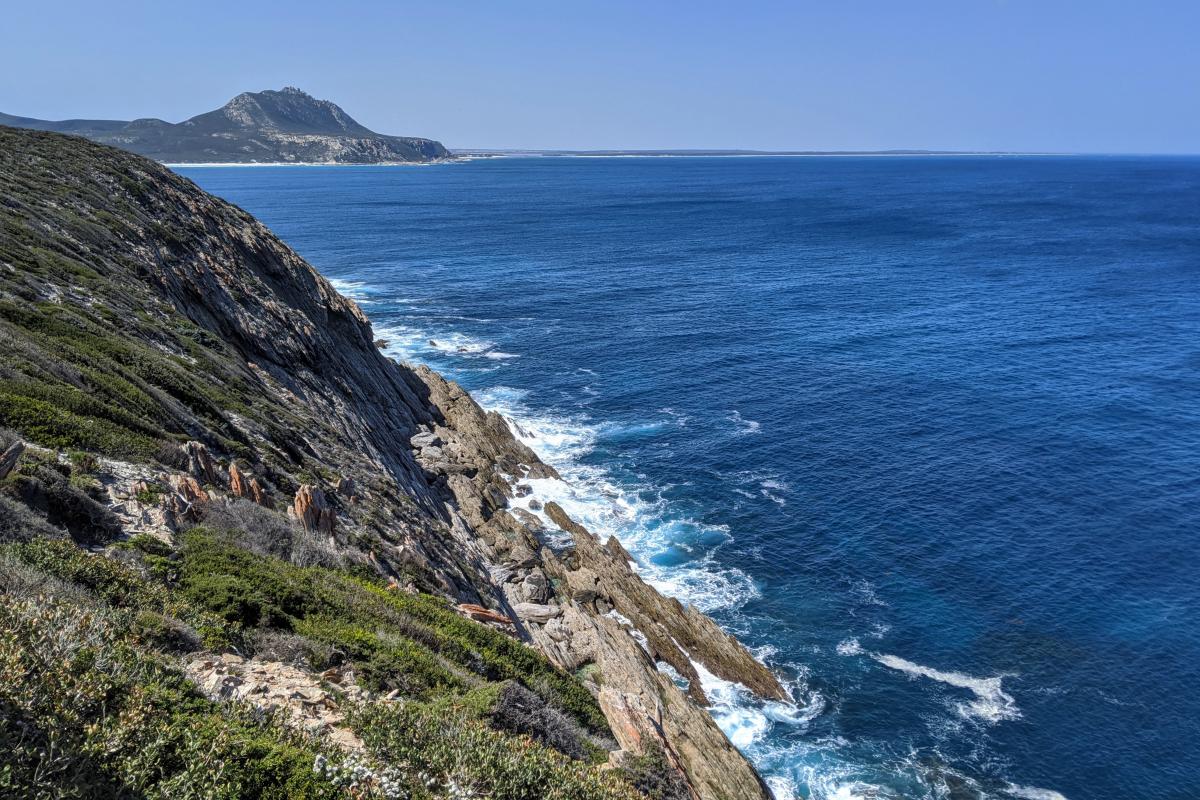
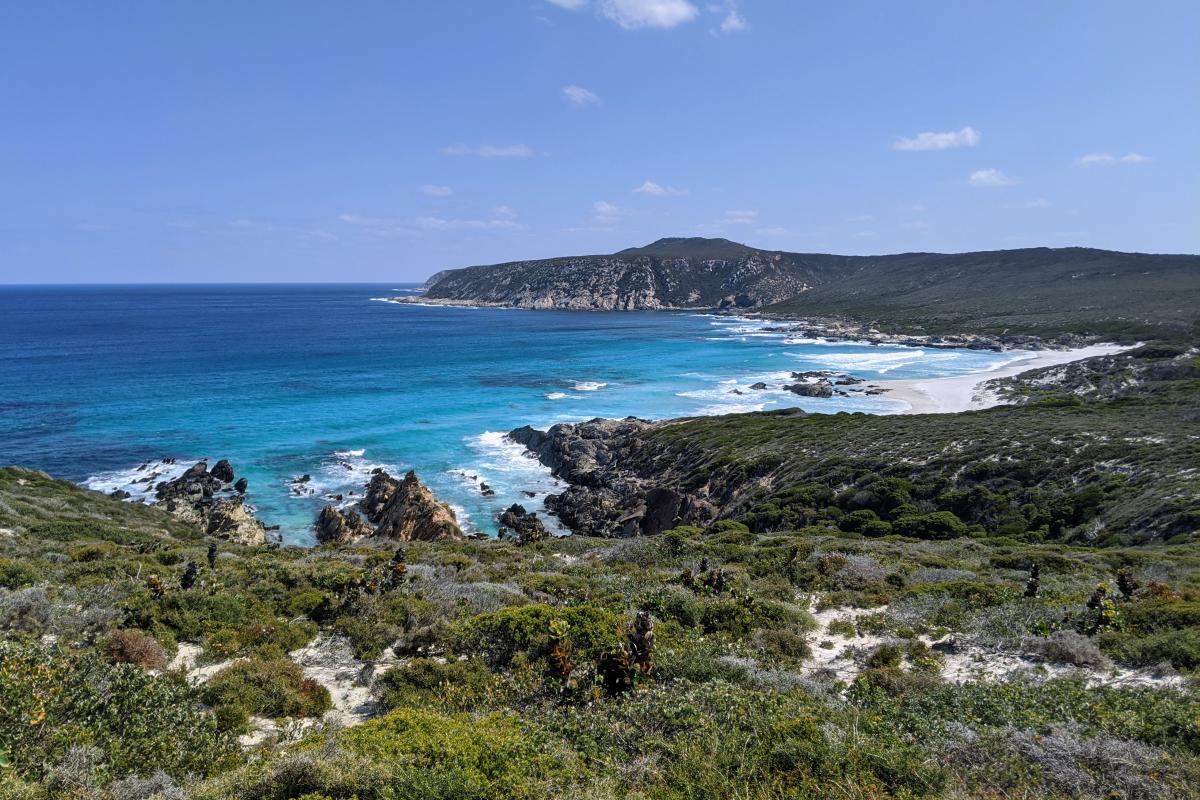
West Beach viewed from Cave Point
Facilities
Toilet
Activities
 Bird watching
Bird watching
 Bushwalking
Bushwalking
Plants, wildlife and fungi
Visit the Atlas of Living Australia for a list of species recorded within a 5km radius of Cave Point.
Traditional Owners
We recognise and acknowledge Goreng, Menang and Wudjari people as the traditional owners of Fitzgerald River National Park.
